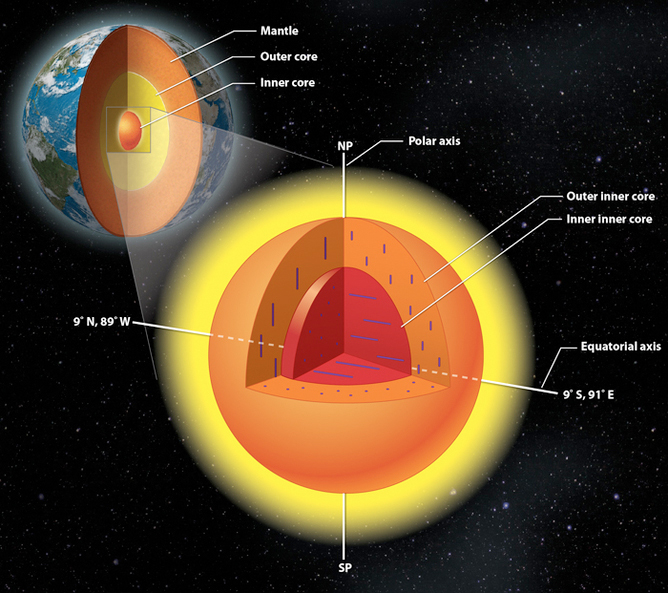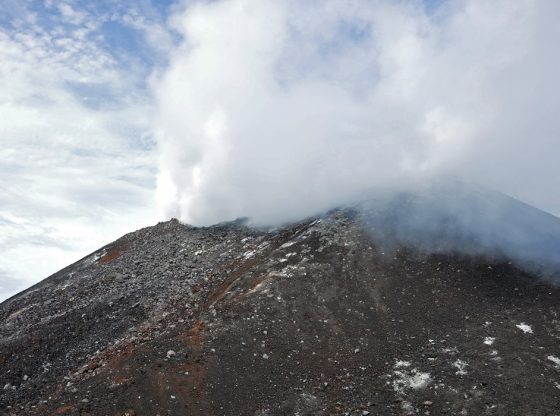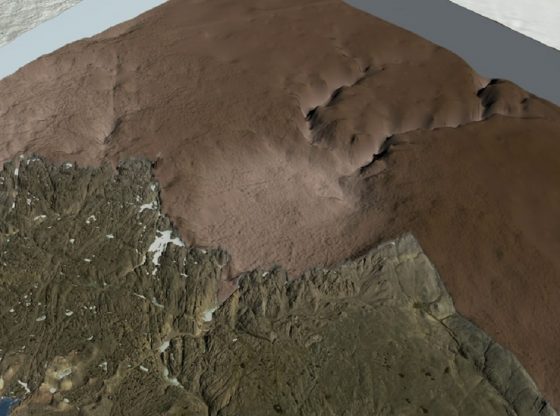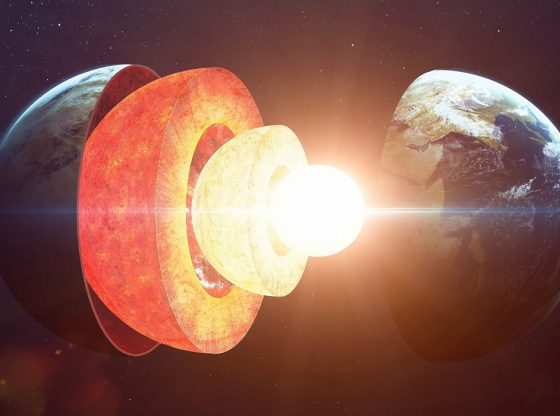
New findings indicate that the inner core of Earth might have an inner core of its own.
The researchers at the University of Illinois used seismic waves to analyze the innermost parts of the Earth and found what indicates to be two cores.
These findings might reveal some surprising properties that could lead us to a new understanding of our own planet; how it formed, its history and dynamic processes that are still ongoing today.
An Inner-Inner Core
Xiaodong Song, who is a professor of geology at the University of Illinois; “The fact that we have two regions that are distinctly different may tell us something about how the inner core has been evolving,”, ”Even though the inner core is small – smaller than the moon – it has some really interesting features.” he adds.
The research team used sensory technology that measures and gathers data based on the waves that resonate after an earthquake. These waves penetrate the planet after an earthquake hit and are known as coda waves. These coda waves indicate that there is a distinct “inner-inner core”, about half the diameter of the whole core.
And it also seems as if the iron crystals in the outer layer of the inner core are aligned directionally, north-south but in the “inner-inner core”, the iron crystals point roughly east-west.
This is actually not the first time that researchers have noticed differences in the way seismic waves travel through the outer parts of the inner core and its innermost parts. But never before have it been suggested that the alignment of the crystalline iron that it’s composed of is set at different angles.
The method used by the researchers was essentially the same method as when the inner core was first detected back in 1936 when seismologist Inge Lehmann observed that seismic waves reflect off a boundary of the inner core, where a solid inner core was distinct from its liquid outer core.
Magnetic Shielding
But these new findings of two distinct cores might provide insight to how Earth’s magnetic field is generated and changes over time. Since the magnetic shield is generated by a geodynamo (the motion of molten iron alloys in its outer core).
And this knowledge could prove crucial since the magnetic field is indeed deflecting most of the solar wind and charged particles that would otherwise strip away the ozone layer that protects the Earth from harmful ultraviolet radiation.
Since the Earth’s magnetic field appears to have alternated between periods called chrons, for which the field shifts between normal polarity and reverse polarity. This newly discovered “inner-inner” core might explain this phenomenon.
Hot as the Surface of the Sun
Theoretical and experimental physics estimate that the temperature of the inner core is about 5,700 Kelvin (5,430 Celsius; 9,800 Fahrenheit) which is about the temperature of the Sun’s surface at 5,778 Kelvin.
Since the pressure in the Earth’s inner core is a staggering 330 to 360 gigapascals (3,300,000 to 3,600,000 atm) iron can actually be solid at such high temperatures. This follows the physical relation known as the Clasius-Clapeyron relation, for which the melting temperature increases with pressure.
The paper “Equatorial anisotropy in the inner part of Earth’s inner core from autocorrelation of earthquake coda” has been published in the journal Nature Geoscience.
________________
Equatorial anisotropy in the inner part of Earth’s inner core from autocorrelation of earthquake coda
________________________________











![OpenAI. (2025). ChatGPT [Large language model]. https://chatgpt.com](https://www.illustratedcuriosity.com/files/media/55136/b1b0b614-5b72-486c-901d-ff244549d67a-350x260.webp)
![OpenAI. (2025). ChatGPT [Large language model]. https://chatgpt.com](https://www.illustratedcuriosity.com/files/media/55124/79bc18fa-f616-4951-856f-cc724ad5d497-350x260.webp)
![OpenAI. (2025). ChatGPT [Large language model]. https://chatgpt.com](https://www.illustratedcuriosity.com/files/media/55099/2638a982-b4de-4913-8a1c-1479df352bf3-350x260.webp)








